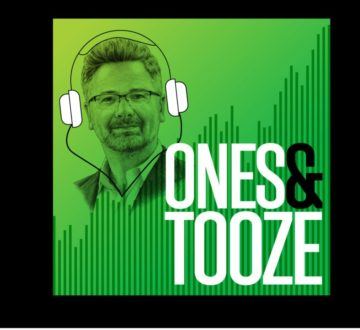All the Carefully Measured Seconds
Back then I still believed it was possible
to prevent certain things, until that hot afternoon.
It was the middle of grain harvest, August of ’54,
when Fred climbed down from his stalled combine
and took off to Montrose to buy a part.
Later I realized the part was a ruse of fate, like
something made up to get someone to a surprise party.
So many times I reran those last hours,
adding or subtracting a few seconds here or there.
Lingering a moment in the field, he could have
noticed the grain shiver as a cloud passed by,
he could have paused by the barn to admire the blue
and lavender flecks adorning the pigeon’s throats,
he could have stopped by the house to finger
the soft leaves of the African violets
on the sill, he could have slipped his arm
around Ella’s waist as she stood at the sink,
her hands in the dishwater.
But, he swatted the grain dust from his overalls
and climbed into his green Buick to keep
his appointment on Highway 38. Even then,
it was not too late. He could have floored
the car just this once, he could have let
the wind rush in, raising his sparse strands
of matted hair to dance in the breeze.
When I saw Fred’s car again, it looked as if
had been punched by the fist of some god
though surely not the same one who keeps
the earth spinning, the sun and moon rising,
passion ascending to fuse new life,
the rose unfolding with tenderness,
the worm tilling the orchard floor,
all the carefully measured seconds
adding up exactly to us.
by Josephine Redlin
from Ploughshares
publisher: Emerson College, Boston, Ma. 1995
 If someone tells you a fact you already know, they’ve essentially told you nothing at all. Whereas if they impart a secret, it’s fair to say something has really been communicated.
If someone tells you a fact you already know, they’ve essentially told you nothing at all. Whereas if they impart a secret, it’s fair to say something has really been communicated.
 Overcoming the risk of “immiserizing” growth – an increase in aggregate national output that results in a net decline in national welfare – has been a perennial challenge as countries pursue economic development. It is also proving to be a major roadblock to achieving greater global income convergence.
Overcoming the risk of “immiserizing” growth – an increase in aggregate national output that results in a net decline in national welfare – has been a perennial challenge as countries pursue economic development. It is also proving to be a major roadblock to achieving greater global income convergence. IS A GAS GUZZLER
IS A GAS GUZZLER Scientists have discovered a glitch in our DNA that may have helped set the minds of our ancestors apart from those of Neanderthals and other extinct relatives. The mutation, which arose in the past few hundred thousand years, spurs the development of more neurons in the part of the brain that we use for our most complex forms of thought, according to a new
Scientists have discovered a glitch in our DNA that may have helped set the minds of our ancestors apart from those of Neanderthals and other extinct relatives. The mutation, which arose in the past few hundred thousand years, spurs the development of more neurons in the part of the brain that we use for our most complex forms of thought, according to a new  Evil: Lost and Found
Evil: Lost and Found Some words are much more frequent than others. For example, in a sample of almost
Some words are much more frequent than others. For example, in a sample of almost  More than 500,000 years ago, the ancestors of Neanderthals and modern humans were migrating around the world when a fateful genetic mutation caused some of their brains to suddenly improve. This mutation, researchers report in Science
More than 500,000 years ago, the ancestors of Neanderthals and modern humans were migrating around the world when a fateful genetic mutation caused some of their brains to suddenly improve. This mutation, researchers report in Science In September of 1994, the editors and writers of The Angolite sought to identify everyone in America who had served two decades or more in prison in a piece titled, “
In September of 1994, the editors and writers of The Angolite sought to identify everyone in America who had served two decades or more in prison in a piece titled, “ Although not originally part of the notorious gang of writers – Martin Amis, Julian Barnes and the late Christopher Hitchens – who made their names in the 70s and dominated the literary scene for much longer (too long, according to their critics), Rushdie arrived a few years later with the publication in 1981 of
Although not originally part of the notorious gang of writers – Martin Amis, Julian Barnes and the late Christopher Hitchens – who made their names in the 70s and dominated the literary scene for much longer (too long, according to their critics), Rushdie arrived a few years later with the publication in 1981 of  Statesman, majored in women’s studies. During her university years, she believed that hookup culture, pornography, and rough sex were all OK for consenting adults. A decade later, she’s changed her mind. Ms. Perry’s experience of working at a rape crisis center made her question the narrative she’d been taught that “rape is about power, not sex.” She then began to rethink other tenets of second-wave academic feminism.
Statesman, majored in women’s studies. During her university years, she believed that hookup culture, pornography, and rough sex were all OK for consenting adults. A decade later, she’s changed her mind. Ms. Perry’s experience of working at a rape crisis center made her question the narrative she’d been taught that “rape is about power, not sex.” She then began to rethink other tenets of second-wave academic feminism. The power of John Donne’s words nearly killed a man.
The power of John Donne’s words nearly killed a man.
 Chris Lehmann in The Baffler:
Chris Lehmann in The Baffler: Catarina Dutilh Novaes and Silvia Ivani in Boston Review:
Catarina Dutilh Novaes and Silvia Ivani in Boston Review: